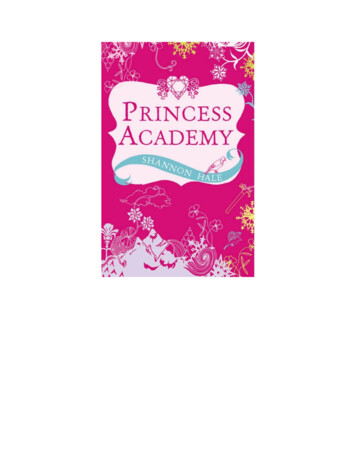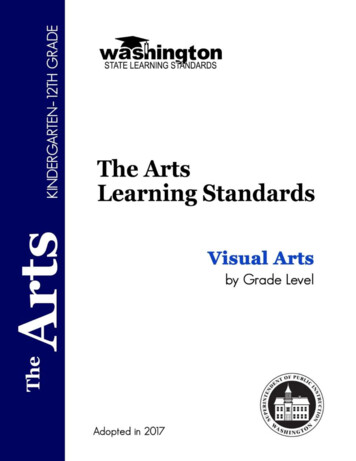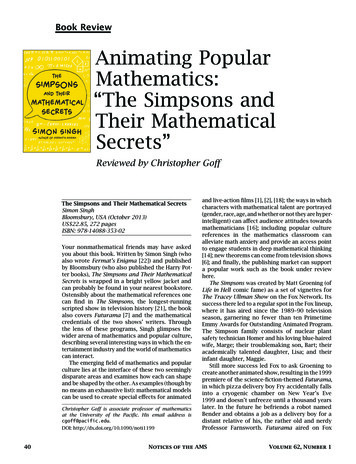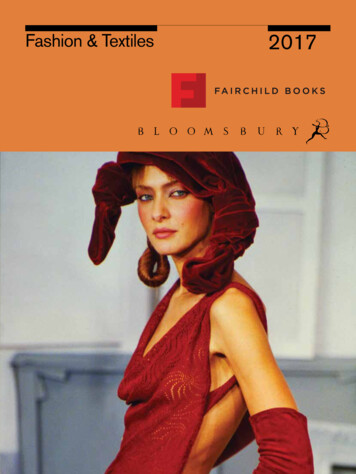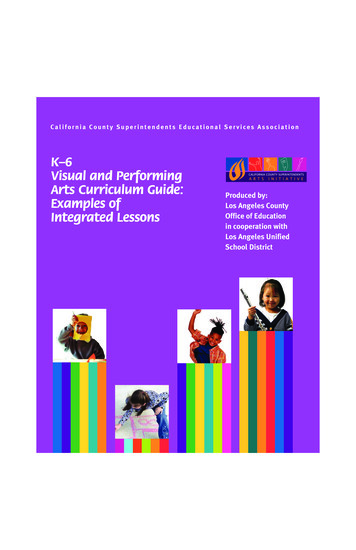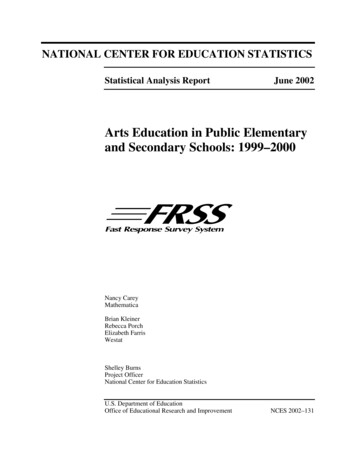
Transcription
BLOOMSBURYVISUAL ARTSRIGHTS GUIDEJanuary-June 2017
ContentsFASHION. 1DESIGN and GRAPHIC ARTS.10FILM, PHOTOGRAPHY and ANIMATION. 13INTERIOR DESIGN and ARCHITECTURE.15WHO TO CONTACTJoanna SharlandSenior Rights ManagerBloomsbury Visual ArtsBloomsbury Publishing PlcKemp House, Chawley Park, Cumnor Hill, Oxford OX2 9PH, UKDirect line: 44 (0)1865 811313 / Reception: 44 (0)1865 727022joanna.sharland@bloomsbury.comClaudia GalluzziRights ExecutiveBloomsbury Visual ArtsBloomsbury Publishing PlcKemp House, Chawley Park, Cumnor Hill, Oxford OX2 9PH, UKDirect line: 44 (0)1865 811306 / Reception: 44 (0)1865 727022claudia.galluzzi@bloomsbury.comBloomsbury Publishing Plc. Registered in England No 01984336Image on front cover from Illustration, see page 10Image on inside back cover from Color Design, see page 15Image on back cover from How to Read a Dress, see page 8www.bloomsbury.com
fashionDesigning a Knitwear CollectionFrom Inspiration to Finished GarmentLisa Donofrio-Ferrezza and Marilyn HefferenDesigning a Knitwear Collection is an essential and comprehensive overview of the knittingdesign and development process.This is an all-in-one reference book: in addition to serving as an introduction to knitting, design, andproduction, it is an ongoing resource for working in the industry. Featuring more than 320 colour images,emerging fashion designers will find inspiration from the work of featured knitwear designers and practicalinformation to design their own knitwear collection. The book follows the history of the industry topresent day, introducing yarn and stitch basics, knitting methods, and machinery. It explores the processof preparing the design package from initial concept and sketches to specifications of samples anddocuments for production—through the presentation of a final collection. Updates to this edition includeadvances in technology in the knitwear industry, expanded coverage of sample development, and morethan 50% new images including new designer profiles and current knitwear designs.Features A more practical approach featuring a new chapter on Garment Design and Execution and more how-toinstructions Colour photographs of work by well-known knitwear designers and illustrations depicting yarn types,stitch samples, garment assembly, and more Sample documents for production, including line sheets, specifications sheets, trim sheets, colourinformation sheets, graphs, and swatches Examples of presentation boards and guidelines for creating portfolios and an appendices featuringdesign documents, industry resources, and a glossary of knitwear termsLisa Donofrio-Ferrezza is an Associate Professor with the Fashion Design Department at the FashionInstitute of Technology (FIT), USA.March 2017320 pages320 colour illustrations280 x 216mm2nd edition9781501313820Marilyn Hefferen is an Associate Professor at Drexel University, USA.Fashion FibersDesigning for SustainabilityAnnie GullingsrudThis title provides a holistic overview of the environmental impacts of fibers at each stage of theproduct lifecycle and offers guidance on how make sustainable design decisions.Fashion Fibers: Designing for Sustainability is an accessible reference tool for fashion students anddesigners who want to learn how to make decisions to enhance the sustainability potential in commonfibers used in the fashion industry. Drawing upon industry expertise, the book introduces readers to thefundamentals of fiber production and the product lifecycle and features a fiber-by-fiber guide to naturalfibers (cotton, hemp, silk), manufactured fibers (polyester, modal, azlon), then covers processing andpromoting circular textiles. Each chapter investigates six main areas of potential impact in fiber cultivation,production, and processing—including chemical use, water, fair labour, energy use, consumer use/washingand biodegradability and recyclability. Readers will learn about the environmental impacts at each stage ofthe lifecycle, how to optimize the sustainability benefits, availability, product applications, and marketing andinnovation opportunities that lead to more sustainable fashion.Features Future Fibers sections highlight emerging fiber technologies and innovations such as Polylactide, a biobased fiber that is derived from corn Emphasizes application through examples and images of product end use Discusses closed loop material systems that enable the recycling of fibers Innovation Exercises offer readers practice designing or merchandising fashion products to optimizesustainability benefitsAnnie Gullingsrud is a Textile & Apparel Associate at Cradle to Cradle (C2C) Products Innovation Institute,USA.March 2017304 pages136 colour illustrations280 x 216mm97815013066481
fashionApparel Production Terms andProcessesJanace E. BuboniaThe highly illustrated Apparel Production Terms and Processes follows the product life cyclefrom concept through completion. The new edition takes a global perspective with expandedcoverage of sizing standards and fit information to complete the scope of the apparel productionprocess.This title defines materials and terms relating to the mass production of raw materials, design and productdevelopment, garment details and component parts, fit, patternmaking, pre-production operations,assembly, production and manufacturing, labelling regulations, testing and quality control, inspection,finishing and packaging. In this revised edition, chapters are presented in a progression that relates tothe flow of the production process or the route of the garment from its origin through development tocompletion. Each chapter opens with a brief introduction followed by terms that are listed alphabeticallyand are grouped according to subject by use or application. The chapters have been reorganized to betterfollow the flow of the production process and chapters’ introductions have been expanded to clarify therelationships between each step in the production process.New to this editionFebruary 2017416 pages1150 mono and 50 colour illustrations280 x 216mm2nd edition9781501315572 New chapter on Sizing and Fit covers sizing standards, fit types, and evaluation of fit Added coverage of international labelling regulations and expanded section on safety compliance Integrates coverage of quality control and inspection featuring common fabric and garment defects intothe Quality Assurance and Product Testing chapter Expanded sourcing information in the Production chapter Coverage of new Technologies such as 3D printing, seamless garments, stitchless seams, andequipmentJanace E. Bubonia is a Professor and Chair of the Department of Design, Merchandising and Textiles atTexas Christian University, USA.Fashion Flats and Technical DrawingBina Abling and Felice DaCostaFashion Flats and Technical Drawing is a step-by-step workbook that introduces technicaldrawing and flat sketching skills—balancing creative drawing techniques with technicalprecision.Including more than 500 illustrations of hand-drawn and CAD flats and 100 photos of muslin garmentsamples, this book covers a large range of garments and construction details used throughout the designprocess to turn technical sketches from concepts into reality. Abling and DaCosta cover basic designconstruction elements such as darts, gathers, trims and other draped garment details and essential fashionstyles for skirts, tops, dresses, pants, jackets and coats. Original illustrations show front-view and backview flats, plus select side-view and 3/4-view flats and variations for menswear and childrenswear. The finalchapter examines the presentation of flats as a collection in a design portfolio.Key Features Introduces basic techniques for creating CAD-generated flats, including clear screen grabs, shortcutsand prompts, how to use the pen tool, and methods for using hand drawn flats to create digital drawings Progresses from basic to intermediate drawing skills using instructional illustrations with red colour linesto clarify steps Guest Artist features explore a range of styles for flats to inspire student creativityMarch 2017248 pages600 2-colour illustrations280 x 216mm97815013083142Bina Abling has taught in the Fashion Design departments of FIT, Parsons The New School for Design inNew York City and as Guest Faculty at Santa Fe Community College, USA.Felice DaCosta is a Professor at Parsons The New School for Design, USA.
fashionConstruction for Fashion DesignAnette Fischer & Kiran GobinFully updated with inspiring new images and insightful case studies, the second editionof Construction for Fashion Design leads readers through the essential stages of creatinga garment, from pattern cutting and draping on the mannequin to sewing techniques andhaberdashery.Construction is the foundation of fashion design; it takes passion and great skill to turn a two-dimensionaldrawing into a successful garment. Construction for Fashion Design guides readers through the process,teaching the theory, practical skills and techniques that they need to succeed. It leads readers throughthe essential stages of creating a garment, from pattern cutting and draping on the mannequin to sewingtechniques and haberdashery. This fully revised and expanded second edition features insightful casestudies with leading creative practitioners at the cutting edge of the fashion industry today, completewith detailed, step-by-step exercises that enable readers to contextualise their knowledge and put it intopractise for the creation of their own successful projects.Anette Fischer is a Senior Lecturer specializing in 3D Development on the BA (Hons) Fashion course atthe University of the Creative Arts, Epsom, UK.Kiran Gobin is a lecturer in Fashion Design at Middlesex University, UK.1213BLOCKS AND PATTERNSCHAPTER 1: GETTING STARTEDSamplesA sample is the first version of agarment made in real fabric. It is thisgarment that goes on the catwalk orinto a press/showroom. Samples areproduced for womenswear in sizes8–10 (6–8 US) to fit the models. Oncethe sale book is closed, the samplesare stored in the company’s archive.Some samples of past collectionsare taken out by designers for photoshoots, events such as premieresand for reference or possible inspiration for future collections.14Whether taking individual measurementsor using a size chart, the main measurements (bust girth, waist girth, waist-to-hiplength and hip girth) will give a goodindication of the body shape the design isintended to fit.Secondary measurements may also betaken from an individual or from a sizechart. This may be the length of skirt, forexample, when drafting a skirt block.Darts can be used to control excess fabricand to create shape on a garment whenstitched together. Curves are added tocreate shape depending on the nature andpurpose of the block.A set of blocks can be cut for oneindividual in order to create bespoke/couture garments. Design houses willoften create their own set of blocks tocomplement their special ethos anddesign philosophy. When starting a set ofblocks, it may help to ask the followingquestions:What is my target group: women,children or men? Centre backCentre frontHow to start a set of blocksHow the measurements relate to theblock15 1.8 The block and its correspondingmeasurements.TASKCHAPTER 1: GETTING STARTED What is your approach to design?I start with a sense of what I would like todevelop, a mood, a feeling and then I startto research around this collecting imageryto bring the story together. There tendsto be an over-all subject, but sometimesthe imagery can reflect more about coloror mood than actual pieces. In addition tothis, I also source vintage pieces aroundthis theme that I will use as a foundationto build upon. From that point, I start withWhat will be the smallest and the an overall silhouette that I would like tolargest size in my size chart?work upon, and start work in more detailWhat is my sample size?on the pieces themselves.What is my collection range: lingerie,How important is the constructiontailoring, streetwear?process in the way you work?The answers to these questions willConstruction is very important, as I tendmake it much easier to cut the rightto explore proportion and volume a lot.blocks from which to create originalThe construction allows me to exaggerpatterns for each collection.ate these whilst still being functional andwearable.Where do you begin with materialresearch?The direction is largely dictated to by theresearch, season and the pieces I source.Then it often starts with suppliers I knowthat have the fabric that I am looking foror similar—often it will throw up somesurprises.Being a menswear designer, how do youbalance detail with innovation of shape?That’s the toughest part—traditionalmenswear is really focused on thedetail, small changes to pockets, cut etc.However, my approach is far more rootedin the sense of proportion and this willoften involve the detail. It is extremelyimportant, however, in menswear thatthe garment is completely functional andworks with the same convenience andease that a traditional piece would. 1. Get a feel for your tools and practicehow to use them. Try the following: Draw straight continuous lines withyour pattern master or set square. Add 3 8 in (1 cm), 1 4 in (0.7 cm) and3 16 in (0.5 cm) seam allowance tothese lines. Draw curves and circles using yourpattern master and French curves. Trace some of these shapes outonto fresh pattern paper and usingthe marks to draw new lines.2. Consider who your target audience isand create a set of blocks. Take yourmeasurements from a live model.Create the following with no seamallowance (also known as NSA): A close fitting block An overgarment block A trouser blockOnce checked andcorrected, transfer these blocks tocards and keep as templates forfollowing exercises and for future use. February 20173. Familiarize yourself with an industrial ordomestic sewing machine. Ensure youhave the correct bobbin and machinefeet for your machine. Practice thefollowing: Sewing in straight lines Sewing in curves and circles Changing stitch length and also testtension208 pages200 colour illustrations230 x 160mm2nd edition1.10 Taking measurements of the body.9781472538758Any advice for any aspiring designers?Go for it, follow your instincts trust them,be brave and get a good accountant.1.9 Practicing drawing lines with a patternmaster.1.11 Threading up an industrial sewingmachine.MenswearJohn HopkinsThis extensively updated and beautifully illustrated introduction to menswear addressesthe resurgence of interest in menswear among contemporary designers, and includes twocompletely new chapters on the design development process and design research, completewith exciting new inspirational images, interviews and exercises.Menswear books for fashion design students are under-represented in relation to the wealth ofwomenswear titles, this fully expanded and updated edition of Menswear provides a broad introduction tothis exciting subject.The second edition includes two completely new chapters on design development for menswear, whichlooks at sportswear, print, denim and knitwear, and on design research, which explores working withsketchbooks, fabric, colour, samples, trimmings, toiles and first samples. Filled with insightful new interviewswith both emerging and established designers, Menswear also features case studies with contemporarymenswear labels, stylists and designers. New exercises complete each chapter, enabling readers toapply their own skills in fabric, colour, print and design. Menswear is an invaluable companion text for alldesigners seeking inspiration for their own menswear design collections.John Hopkins is Head of Fashion and Textiles at Winchester School of Art, UK.918MenswearThrough the Ages1CHAPTER 1: MENSWEAR THROUGH THE AGESThis chapter offers an edited introduction to some of the social and historicalcontexts that have impacted and defined menswear through the ages. Thechapter includes a brief chronology of menswear from the ancient world tothe twentieth century and is intended to illustrate some of the more significantdevelopments and advancements associated with menswear design. Itis hoped that the reader will gain an appreciation of the rich and diversesocial history associated with men’s clothing as a precursor to consideringcontemporary menswear design.ORIGINS OF TAILORING19BurberryDouble-breasted blazerIt was standard practice for officers andsailors in the eighteenth century to wear bluejackets with gold buttons for shore attire.The term blazer became attached to theBritish frigate HMS Blazer when the captainsupposedly arranged for his crew to wearthe distinctive tailored style in preparation fora visit to the ship by Queen Victoria. Todaythe navy blazer is a classic item of clothingfor men. Available in additional colors forcivilian attire, the double-breasted tailoredblazer, with its characteristic peak lapels,is popular in wool flannels, worsteds, andserge. Military-inspired brass buttons adornthis iconic item, which occupies a uniqueposition in a man’s wardrobe somewhereFounded by a young draper calledThomas Burberry in 1856, the Britishluxury brand is most closely associatedwith its distinctive house check andtrench coat styles for men and women.Thomas Burberry is credited withinventing and promoting gabardinefabric as a breathable, weatherprooffabric during the nineteenth century.Burberry soon gained a reputation foroutfitting expeditions to extreme weatherenvironments including the Antarcticand Mount Everest. A commission bythe British War Office in 1914 led to thedevelopment of the classic trench coatstyle for men complete with epaulettes,storm flap and “D” ring attachments.February 2017200 pages200 colour illustrations230 x 160mm2nd edition9781474230100between formal and sportswear.British WarmOriginally conceived as a military overcoat,this British style was worn by officersduring the First World War. The doublebreasted overcoat is distinctively tailored inappearance with darts and seam shapingand is characterized by the addition ofepaulettes and leather buttons. Lapels arepeaked with jetted pockets and an outbreastwelt. The knee-length British Warm is usuallymade from melton wool or a heavy cavalrytwill with a center-back vent.It is only the modern thatever becomes old-fashioned.Oscar Wilde1.1Nineteenth-century portrait of Porfirio Díaz,Mexican president, in his military uniform.891.4Burberry continues to update its signature trenchcoats in its contemporary menswear collections.3
fashionFashion BuyingFrom Trend Forecasting to Shop FloorDavid Shaw and Dimitri KoumbisFully updated with inspiring new imagery, the second edition of Fashion Buying explores what this key industryrole entails in terms of the activities, processes and people involved, all from the perspective of the fashion buyer.Containing fully updated and beautifully illustrated need-to-know info, this revised second edition of the bestselling textbookon fashion buying contains everything today’s fashion management student needs to give them a clear head-start in thislucrative but highly competitive industry.January 2017184 pages120 colour illustrations230 x 160mm2nd edition9781474252928Fashion Buying uniquely looks at what fashion buying entails in terms of the activities, processes and people involved –from the perspective of the fashion buyer. The book breaks down the five key areas of buying activity for those wishing topursue a career in the industry, crucially exploring the role of the fashion buyer, sources of buying inspiration, sourcing andcommunication, merchandise planning and trends in fashion buying.Featuring completely revised content on retail typology (including need-to-know information on demographics, price pointsand markets), and selecting and buying garments (line sheets, purchase orders and lookbooks), Fashion Buying now includesvaluable new sections on customer profiling, merchandise pricing (mark-ups, markdowns and how pricing is calculated forprofit), and trends.David Shaw worked in fashion buying for over 20 years for some of the UK’s largest fashion retailers. A pioneer of several ofthe first fashion buying courses, David is now an academic, consultant trainer and writer.Dimitri Koumbis has been in the retail sector for over 15 years, working in the merchandising management and storedesign sectors for various fast-fashion retailers such as Banana Republic and Urban Outfitters. He left corporate retail topursue a career in academia and currently teaches various college level courses in contemporary retail environments, retailentrepreneurship and visual merchandising and store design at the Art Institute of New York, USA. Dimitri holds a BSD inInterior Design and BA in Design Management from Arizona State University and a MA in Graphic Design from SavannahCollege of Art and Design.The FashionBuyer1140CSR StakeholdersMany individuals, companies,and communities are part ofCSR outreaches:O How a buyer operates varies considerably: adepartment store buyer may select from pre-existing branded ranges, while a buyer for a mid-range,private-label clothing retailer will be required todevelop a unique range from scratch. Whateverthe sector, the success of any fashion businessrelies on the buyer to purchase a unique range ofproducts that both attract customers and generaterevenue for the retail organization.CORPORATE SOCIAL RESPONSIBILITYBuying teams have a responsibility to themselves, to the company that they work for,and, most importantly, to the consumer purchasing goods sold in retail outlets. Oftencalled CSR for short, corporate social responsibility is the self-imposed regulatorysystem that a retailer builds into their business plan and company mission. Theobjective is to seamlessly integrate people, planet, and profit into a module that canwork to create sustainable measures for all three elements.While the term “CSR” is fairly young, stemmingfrom corporations in the late twentieth centurywho were looking to protect shareholders,the concept of ethical decision making for thegreater good has long been a practice carried outby many small business owners and non-profitorganizations.Fashion buying is often seen as one of the mostglamorous of all fashion retailing roles. Manyparts of it are; however, other aspects of the jobrequire a business-savvy mind, strong attention todetail, and sheer determination. Fashion buying isa tough, competitive world in which buyers workwith all product levels, across different sectorsof the industry—from discount operations to themost expensive high-end brands.O O O O 1.1 FALL/WINTER 2015–16The Francois EymericPresentation during ParisFashion Week.CHAPTER 5: TRENDS IN FASHION BUYING141Corporate social responsibilityWORKPLACEIn retail, ethical decision making comes in manyforms, from abiding by international trade lawsto fair/equal wages paid to all employees. Whena retailer decides to grow its business with CSRinitiatives, it typically maps out an overall plan forlong-term growth and will then start with smalltasks that won’t drastically deplete revenue,allowing it to grow in a positive direction.Each employee, knowing that the companyhas identified specific initiatives, will then berequired to help achieve these goals, bothin the short and long term. In addition to thecompany initiatives, each employee bears theresponsibility of monitoring their own ethicalbehavior in an effort to help the retailer to reachtheir intended goal.people planet profit COMMUNITYCORPORATE SOCIALRESPONSIBILITYENVIRONMENTEmployees—those workingin the field and at corporateoffices, from senior management to maintenanceCustomers—past, present,and future customers whobuy into the company brandCommunities—the areas andindividuals who are part ofthe physical environmentwhere shops or home officesare locatedSuppliers—both national andinternational, as well as theemployees of the suppliersInvestors—those who wantto see the company growbut typically only providemonetary means or consulting servicesMARKETPLACE”Consumers have not been toldeffectively enough that they havehuge power and that purchasingand shopping involve a moralchoice.”Anita Roddick(founder of The Body Shop)5.11 CSR CYCLECorporate social responsibilityinitiatives involve multipleentities within the context ofsocial, environmental, andeconomic values. It is importantto understand how each isdependent on the other and howlack of initiative for one couldseriously affect the others, bothpositively and negatively.1Marketing Fashion FootwearThe Business of ShoesFiona Armstrong-Gibbs and Tamsin McLarenThe definitive guide to the theories and strategies used to develop, manage and market fashion footwear.200 colour illustrationsThe first book to provide in-depth insights into one of the fastest growing areas of the fashion industry, Marketing FashionFootwear: The Business of Shoes explores the retail environment, consumer attitudes to footwear, as well as brand creation,production and protection. It takes as its specific focus the marketing and merchandising of fashion footwear, as opposed toperformance footwear, or health and safety footwear, such as work boots or orthopaedic shoes. As such, this book uniquelyprovides a comprehensive guide to the theories and strategies used to develop, manage and market fashion footwear.Key marketing, merchandising and brand management theories are applied to current case studies from some of the mostsuccessful international footwear and fashion brands, and interviews with key industry figures offer unique insights into thislucrative industry, making it a must-have text for all students of fashion retailing, fashion merchandising, fashion management,and those looking to specialise in the footwear industry. Despite the huge market in fashion footwear, no single academictextbook specifically addresses the fashion footwear business: Marketing Fashion Footwear addresses this gap anddemonstrates how footwear is now seen as an integral part of the retailer mix.270 x 210mmFiona Armstrong-Gibbs is Senior Lecturer in Fashion at Liverpool John Moores University, UK.May 2017208 pages97814725793174Tamsin McLaren is Senior Lecturer in Fashion Management with Marketing at Southampton Solent University, UK.
fashionSocial Media for Fashion MarketingStorytelling in a Digital WorldWendy BendoniThis book uniquely explores how social media marketing platforms are utilized by professionals in the fashionindustry to determine new digital strategies for growth and as effective new media tools for content drivenmarketing.Social Media for Fashion Marketing enables students to explore how social network platforms continue to alter digitalcommunication and have an impact on the marketing strategies employed by the fashion industry. It also crucially equipsreaders with the know-how to examine current industry trends in social media marketing, such as the impact of newtechnologies, digital influencers, analytics and SEO on the fashion cycle and on consumer behaviour.This book uniquely explores how social media marketing platforms are utilized and integrated by fashion industryprofessionals to better understand a brand’s target audience, determine new digital strategies for growth and to createeffective new media tools.February 2017304 pagesReaders gain valuable insights through a range of digital marketing case studies and chapter exercises that focus on criticalthinking and practical applications. The title also features an impressive wealth of interviews with key industry practitioners,including Daniel Plenge (Marc Jacobs), Aliza Licht (Donna Karan International), Alistair Allan (Burberry), Laura West (Nike) andAndrea Port (Kenneth Cole).200 colour illustrations270 x 210mm9781474233323Wendy Bendoni is Assistant Professor and Chair of the Fashion Marketing department in the School of Business atWoodbury University, USA, and a Consumer Trend Analysis expert to the Carl Benz Academy (Mercedes Benz of China,University of Beijing and the University of Berlin).INTRODUCTIONINTRODUCTIONThe Author’s Inspiration For This Textbook:ApproachThe inspiration for this book originated from a conversationon teaching social media in the context of fashionmarketing. In search of a book, I quickly learned that mostbooks available do not cover the topic of social mediamarketing within the context of the business of fashion.I remember speaking to other professors in search of asimilar type of book and we all agreed that we did notneed another book on the basics of how to use socialmedia or a single chapter on the general rules of socialmedia. Rather, we needed a book that introduced socialmedia marketing from the fashion industry’s point of viewthat focused on the raised expectation of consumers inthe digital age of social sharing and real-time content.This created an opportunity to create a textbook thatwould approach the topic of fashion marketing in thedigital world by pairing academic research findings withindustry-related experiences, content, case studies,and insightful interviews. I pooled together my industryresources from over two decades of professional practiceas a fashion marketer from Donna Karan’s SVP of GlobalCommunication Director to Condé Nast Digital MarketingDirector. The goal of this textbook is to prepare, inform,educate, and share with the next generation of fashionmarketing, manager, digital curators, and public about thebusiness of fashion in the digital landscape. This textbookaims to enable students to learn about social mediamarketing efforts (e.g. campaigns, social engagement,outreach programs, content marketing) as well to preparethem to better understand the new digital-savvy consumer
Menswear books for fashion design students are under-represented in relation to the wealth of womenswear titles, this fully expanded and updated edition of Menswear provides a broad introduction to this exciting subject. The second edition includes two completely new chapters on design development for menswear, which

